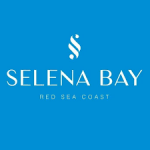Kitesurfing in Egypt offers an electrifying blend of adventure, natural beauty, and favorable wind and water conditions that have rapidly made the country a mecca for enthusiasts from around the globe. Over the past few decades, Egypt has evolved from being famous solely for its ancient history and vibrant culture into a world-class destination for water sports. In this exploration, we delve into what makes Egypt such an attractive location for kitesurfing, describing its unique natural conditions, the evolution of the sport in the region, the variety of spots along the Red Sea, and the dynamic local kitesurfing community.
A Natural Playground with Unbeatable Conditions
Egypt’s Red Sea coast is blessed with a combination of consistent winds and expansive shallow lagoons that create ideal conditions for kitesurfing almost year-round. During the optimal season—from April to October—the northerly winds, often referred to as the “Khamsin” or “Hamsin” winds, typically blow at speeds that range from 15 to 25 knots. These winds, combined with flat water areas, allow both beginners and advanced riders to harness the wind effectively and enjoy long, smooth runs on the water. In many areas, the water temperature remains warm, and the shallow coves and lagoons reduce the risk of collisions with underwater obstacles, making learning safer and progression easier for newcomers.
Egypt’s geography plays a crucial role in these ideal conditions. The contrast between the vast, open Red Sea and the rugged, arid desert creates steady thermal winds in many coastal areas. Furthermore, the absence of large tidal shifts means that the water remains consistently calm during peak kiteboarding hours. These environmental factors not only elevate the sport but also contribute to the region’s reputation as a top kitesurfing location worldwide.
Historical Emergence of Kitesurfing in Egypt
While kitesurfing itself is a relatively modern sport, Egypt quickly embraced this adrenaline-fueled activity as its natural advantages became globally recognized. In the early stages, a small group of adventurous expatriates and local sports enthusiasts began exploring the potential of the Egyptian coast. Their positive experiences spurred the establishment of dedicated kite centers and schools along the Red Sea, particularly in resort towns like Hurghada, El Gouna, and Dahab.
The establishment of schools such as Kite School Egypt and Paradise Kitesurfing Red Sea set an example of how organized instruction and careful safety protocols could help introduce kitesurfing to a broader audience. These centers provided structured lessons, equipment rentals, and a safe learning environment, rapidly growing the local community and drawing international visitors seeking adventure on the water. Over time, word of mouth and growing media exposure led to Egypt being featured in various kitesurfing guides and travel blogs, cementing its status as a premier destination for the sport.
Diverse Spots for Every Kitesurfer
Egypt’s coastline is dotted with numerous spots, each offering its own unique mix of natural beauty and kiting conditions. One of the most iconic spots is El Gouna, a purpose-built resort town on the Red Sea designed with canals and lagoons reminiscent of Venice. El Gouna is particularly well-known for its family-friendly atmosphere and calm, flat waters that make it ideal for beginners. The well-developed infrastructure here means that riders have access to high-quality equipment, professional instruction, and stylish beach bars for relaxation after a day on the water.
Hurghada, on the other hand, is a bustling resort city where the kitesurfing scene thrives alongside a vibrant tourist economy. Home to several established kite schools, Hurghada’s spots—such as those found along its western shores—offer both the gentle conditions needed for first-timers and more challenging winds for experienced kiteboarders. The variety of conditions and facilities has earned Hurghada a reputation not only as a holiday destination but also as a training ground for those looking to hone their skills.
For riders seeking a less commercialized environment, Dahab on the Sinai Peninsula provides a more bohemian and relaxed vibe. Dahab’s Blue Lagoon, with its remote and picturesque setting, offers miles of unobstructed space that are perfect for those who want to combine their kitesurfing sessions with opportunities to unplug from modern life. Dahab’s constant winds have also earned it a reputation among kitesurfers who relish the raw beauty of nature alongside their seasonal sessions.
Ras Sudr is another gem along the Egyptian coast that is rapidly gaining popularity. Positioned at the northern entrance of the Gulf of Suez, Ras Sudr’s open spaces and reliable winds—reaching up to 30 knots during the peak month—create exhilarating conditions for both freestyle tricks and speedy cross-water rides. Although less developed than other hubs, the natural beauty and untouched quality of Ras Sudr make it a coveted spot for experienced kitesurfers looking for adventure away from the crowds.
The Role of Kitesurfing Schools and Community
No discussion of kitesurfing in Egypt would be complete without acknowledging the dedication and passion of the local kite schools. Organizations such as Kite-Active School, Sultan Kite School, and Tiger Kite & Surf School have been instrumental in promoting safe and dynamic kitesurfing practices. They offer structured lessons tailored to all levels—from complete novices who are just getting their feet wet to advanced athletes looking to improve their freestyle tricks or racing skills.
These schools emphasize not only the technical aspects of riding but also the respect for the natural environment. Environmental stewardship is often an integral part of the curriculum, with instructors urging students to protect the fragile marine and coastal ecosystems upon which the sport depends. Aside from teaching the basics of kite control and water safety, classes also focus on awareness of changing weather conditions and local tidal rhythms, ensuring that riders are well-prepared for the dynamic conditions they will encounter on the Red Sea.
Community events, competitions, and social gatherings organized by these centers help build a vibrant network where both locals and visitors share their passion for the sport. This sense of camaraderie and mutual respect enhances the overall experience, making kitesurfing in Egypt more than just a sport—it becomes a lifestyle and a cultural bridge connecting people from across the world.
Kitesurfing and Tourism: A Symbiotic Relationship
The growth of kitesurfing in Egypt has had a significant impact on local tourism. Resorts and hotels have begun to cater specifically to the needs of water sports enthusiasts, offering shuttle services, exclusive beach access, and equipment rental packages. Tourism boards actively promote Egypt’s kitesurfing spots, highlighting the nation’s ideal weather conditions, scenic coastline, and world-class facilities. This has led to a mutually beneficial relationship between kitesurfing operators and the broader tourism sector, boosting local economies and providing sustainable opportunities in coastal regions.
Furthermore, the influx of international visitors eager to experience Egypt’s kitesurfing scene has spurred infrastructure development. Investments in coastal facilities, enhanced transportation links, and improved safety measures have not only made the sport more accessible but also ensured that the sport can continue to grow without compromising on quality or environmental standards.
Looking Forward: Trends and Innovations
As technology and water sports continue to evolve, Egypt’s kitesurfing community stands on the brink of exciting innovations. New developments in kite design, improved materials in boards and safety gear, and more advanced forecasting tools for weather prediction promise to elevate the experience further. Moreover, emerging trends such as kite cruises, which combine the thrill of kitesurfing with luxury accommodations, are making waves among adventure-seeking travelers. For instance, Egypt Kitesurfing Cruise offers an all-inclusive, five-star experience that allows riders to explore adventurous desert islands by day and enjoy the comforts of modern amenities by night.
The future of kitesurfing in Egypt looks incredibly promising. With a continuous influx of investment, growing awareness of sustainable tourism, and the enduring passion of the local kiting community, Egypt is set to remain at the forefront of the global kitesurfing map for many years to come.
In conclusion, kitesurfing in Egypt is more than just a trend—it is a dynamic sport that encapsulates the spirit of adventure and the beauty of natural landscapes. With ideal wind conditions, a variety of locations to suit every skill level, a rich and dedicated kiting community, and a thriving tourism landscape that supports the sport, Egypt offers an unparalleled experience on the water. Whether you are a novice intrigued by the possibility of flight on water or an experienced rider chasing the perfect wind, the Egyptian Red Sea beckons with open arms and endless possibilities.
For those hungry for more information, diving deeper into the individual kitesurfing spots—like the bustling beaches of Hurghada, the serene lagoons of El Gouna, the bohemian charm of Dahab, or the remote adventure of Ras Sudr—offers even richer perspectives on what makes each location unique and worth exploring. As Egypt continues to develop its infrastructure and embrace eco-friendly practices, the kitesurfing experience there is set to soar to new heights, inviting enthusiasts from across the globe to ride, explore, and celebrate life on the water.



















